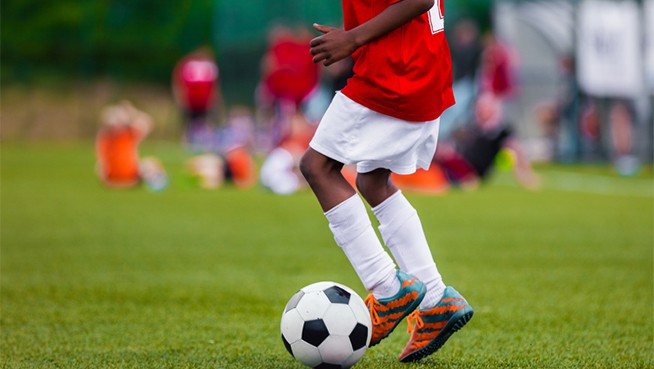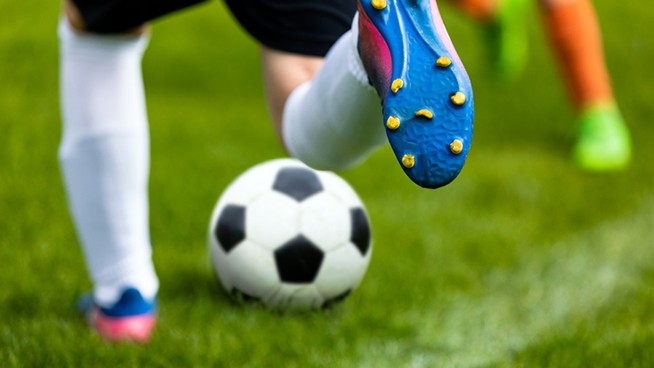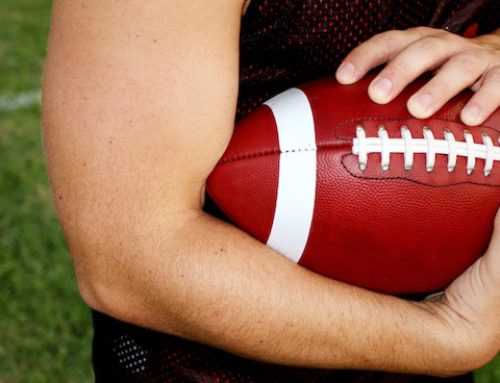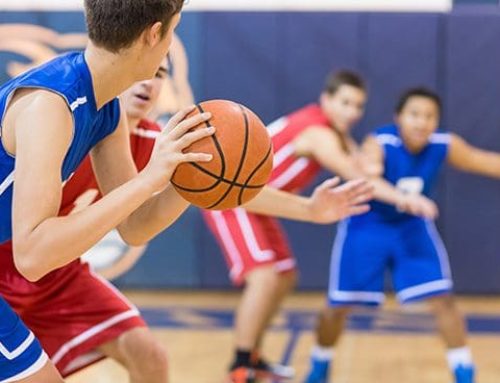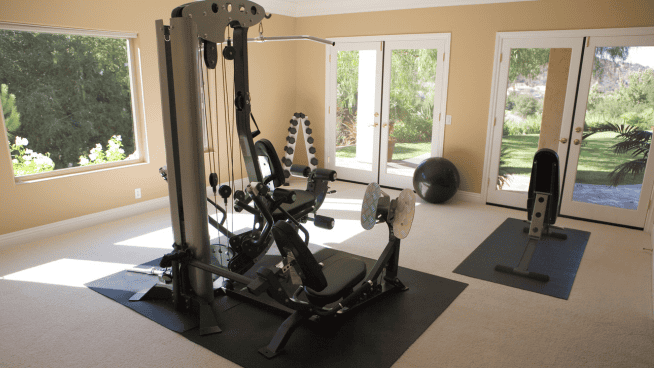Get Instantly Faster by Improving Your Freestyle Swim Kick Technique
The freestyle swim kick plays an integral part in swimming success. Balancing drag and propulsion while executing this skill is a unique continuum in the sport of swimming. The goal is to maximize propulsion and minimize drag to swim at high speeds.
Drag is the largest factor inhibiting speed in swimming. Therefore, minimizing drag during the kick is the first priority. The object of least resistance is a rigid line, so the goal is to form a rigid line from your head to your toes.
Of course, minimizing drag is not the sole variable for swimming speed. You also have to propel yourself forward, which adds complexity to the skill. Since some swimmers are more streamlined than others, the right balance is personal. But for each person, finding the ideal balance is essential. (Learn 3 tips for improving your freestyle form)
Propulsion results mainly from arm action. Studies suggest that the legs actually provide minimal propulsion (Brooks 2000; Deschodt 2009). Therefore, the role of the freestyle swim kick is to transfer force from the upper body while maintaining balance in the position of minimal drag.
Many swimmers are taught to kick through their hips, keeping their knees straight. This instruction is correct in theory, as it minimizes drag by maintaining a straight line from the hip to the toe (if you point your toes) (McCullough 2009). However, many swimmers overkick from the hip, resulting in excessive hip movement, which creates drag. Starting the kick from the hip is critical for maximal propulsion and kicking success, but this is an initiation, not the entire movement.
An elite freestyle kick is often compared to kicking a soccer ball. To counterbalance your arm movements, following through on the kick is essential. To enhance your kick, follow this sequence:
- Find streamline
- Initiate from the hip (but don’t overkick)
- Kick quickly to maintain streamline
- Follow through with your kick to counteract your arms
Kicking Implementation
Unlike traditional instruction, kicking with boards to build endurance is not advised, because learning how to balance the body is more important. Moreover, a board alters swim biomechanics, limiting the actual swimming benefit (Konstantaki 2007).
For novices, drills and repetition result in improvement. More advanced swimmers need direct feedback and underwater analysis. It’s better to focus on your kick while swimming than to kick in isolation, since drag and balance remain as factors.
It’s important to use your race kicking pattern during practice. This increases motor learning and improves your kicking skill. Too often swimmers do a two-beat kick (two kicks for two arm strokes, or a stroke cycle) during workouts. Unfortunately, a two-beat kick is uncommon in many swimming events. If you used a six-beat kick instead of a two-beat kick, you do about 40 more kicks per 25 yards! This volume adds up and makes kicking with an external aid unnecessary.
References
1. McCullough AS, Kraemer WJ, JS, Solomon-Hill GF Jr, Hatfield DL, Vingren JL, Ho JY,Fragala MS, Thomas GA, Häkkinen K, Maresh CM. “Factors affecting flutter kicking speed in women who are competitive and recreational swimmers.” J Strength Cond Res. 2009 Oct; 23(7):2130-6.
2. Brooks, R. W., Lance, C. C. & Sawhill, J. A. “The biomechanical interaction of lift and propulsion forces during swimming.” Medicine and Science in Sports and Exercise. 2000, 32(5).
3. Deschodt, V. J. “Relative contribution of arms and legs in humans for propulsion in 25m sprint front-crawl swimming.” European Journal of Applied Physiology and Occupational Physiology. 1999 80, 192-199.
4. Konstantaki, M., & Winter, E. M. (2007). “The effectiveness of a leg-kicking training program on performance and physiological measure of competitive swimmers.” International Journal of Sports Science and Coaching. 2007 2, 37-48.
Photo: U.S. Navy photo by Mass Communication Specialist 1st Class Andre N. McIntyre/Released
RECOMMENDED FOR YOU
Get Instantly Faster by Improving Your Freestyle Swim Kick Technique
The freestyle swim kick plays an integral part in swimming success. Balancing drag and propulsion while executing this skill is a unique continuum in the sport of swimming. The goal is to maximize propulsion and minimize drag to swim at high speeds.
Drag is the largest factor inhibiting speed in swimming. Therefore, minimizing drag during the kick is the first priority. The object of least resistance is a rigid line, so the goal is to form a rigid line from your head to your toes.
Of course, minimizing drag is not the sole variable for swimming speed. You also have to propel yourself forward, which adds complexity to the skill. Since some swimmers are more streamlined than others, the right balance is personal. But for each person, finding the ideal balance is essential. (Learn 3 tips for improving your freestyle form)
Propulsion results mainly from arm action. Studies suggest that the legs actually provide minimal propulsion (Brooks 2000; Deschodt 2009). Therefore, the role of the freestyle swim kick is to transfer force from the upper body while maintaining balance in the position of minimal drag.
Many swimmers are taught to kick through their hips, keeping their knees straight. This instruction is correct in theory, as it minimizes drag by maintaining a straight line from the hip to the toe (if you point your toes) (McCullough 2009). However, many swimmers overkick from the hip, resulting in excessive hip movement, which creates drag. Starting the kick from the hip is critical for maximal propulsion and kicking success, but this is an initiation, not the entire movement.
An elite freestyle kick is often compared to kicking a soccer ball. To counterbalance your arm movements, following through on the kick is essential. To enhance your kick, follow this sequence:
- Find streamline
- Initiate from the hip (but don’t overkick)
- Kick quickly to maintain streamline
- Follow through with your kick to counteract your arms
Kicking Implementation
Unlike traditional instruction, kicking with boards to build endurance is not advised, because learning how to balance the body is more important. Moreover, a board alters swim biomechanics, limiting the actual swimming benefit (Konstantaki 2007).
For novices, drills and repetition result in improvement. More advanced swimmers need direct feedback and underwater analysis. It’s better to focus on your kick while swimming than to kick in isolation, since drag and balance remain as factors.
It’s important to use your race kicking pattern during practice. This increases motor learning and improves your kicking skill. Too often swimmers do a two-beat kick (two kicks for two arm strokes, or a stroke cycle) during workouts. Unfortunately, a two-beat kick is uncommon in many swimming events. If you used a six-beat kick instead of a two-beat kick, you do about 40 more kicks per 25 yards! This volume adds up and makes kicking with an external aid unnecessary.
References
1. McCullough AS, Kraemer WJ, JS, Solomon-Hill GF Jr, Hatfield DL, Vingren JL, Ho JY,Fragala MS, Thomas GA, Häkkinen K, Maresh CM. “Factors affecting flutter kicking speed in women who are competitive and recreational swimmers.” J Strength Cond Res. 2009 Oct; 23(7):2130-6.
2. Brooks, R. W., Lance, C. C. & Sawhill, J. A. “The biomechanical interaction of lift and propulsion forces during swimming.” Medicine and Science in Sports and Exercise. 2000, 32(5).
3. Deschodt, V. J. “Relative contribution of arms and legs in humans for propulsion in 25m sprint front-crawl swimming.” European Journal of Applied Physiology and Occupational Physiology. 1999 80, 192-199.
4. Konstantaki, M., & Winter, E. M. (2007). “The effectiveness of a leg-kicking training program on performance and physiological measure of competitive swimmers.” International Journal of Sports Science and Coaching. 2007 2, 37-48.
Photo: U.S. Navy photo by Mass Communication Specialist 1st Class Andre N. McIntyre/Released


